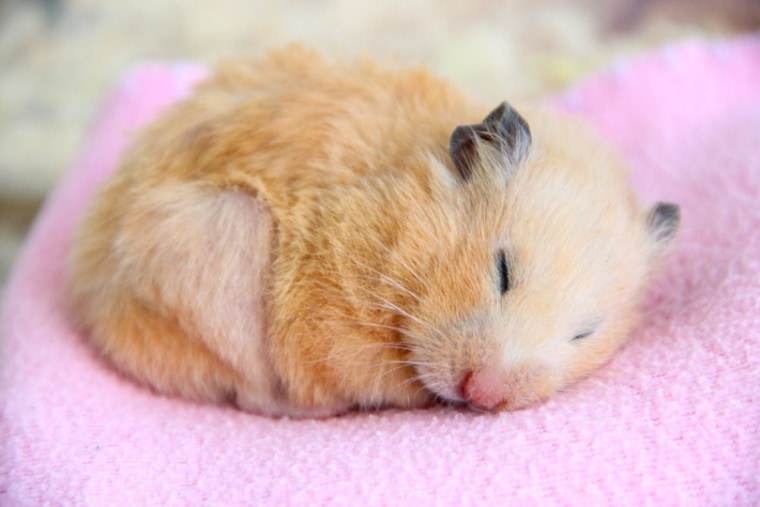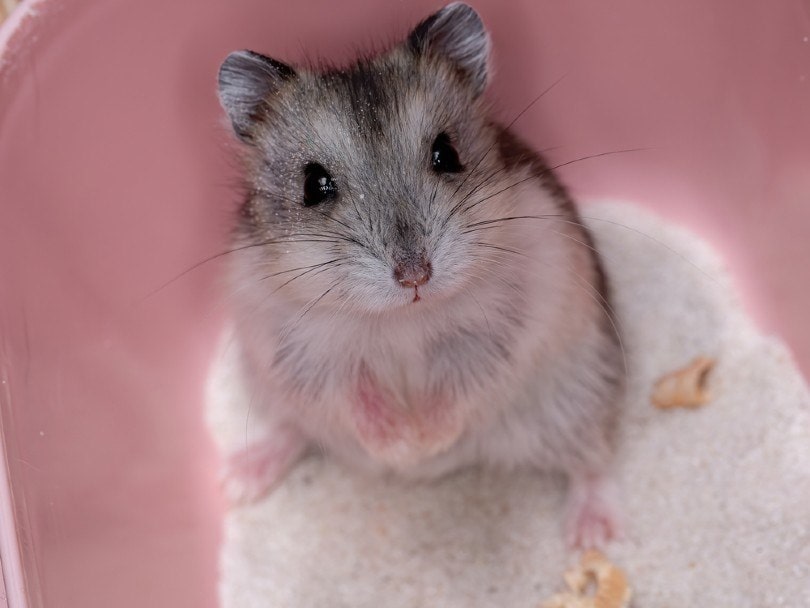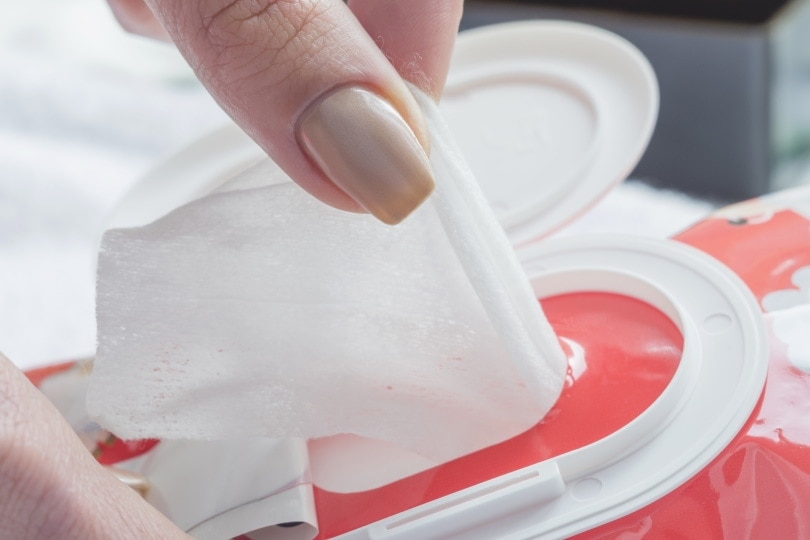
If your hamster is starting to look a little dirty and smell a little stinky, you might be curious about the best and safest way to clean them up. Can you give a hamster a bath, for example? Hamsters normally do not need to be bathed with soap and water, especially when there are alternative cleaning methods available to you. A hamster will need a water bath only in very specific cases.
In this article, we’ll talk about ways to keep your hamster clean without a full water bath. We’ll also give you some tips for bathing your hamster safely should it become necessary. Finally, we’ll cover the other regular grooming routines your hamster needs to stay healthy.
 Why Your Hamster Might Need a Bath
Why Your Hamster Might Need a Bath
Generally, hamsters are very good at keeping themselves clean, self-grooming like cats. Because of this, they usually don’t need regular baths.
However, older hamsters may have trouble grooming themselves as they age. If they start having issues moving around, they may not be able to move away from their poop and pee and soil their fur.
Long-haired hamster breeds are also more likely to get dirty and tangled fur and need some help cleaning up.
Finally, a hamster might need a bath to remove a foreign or toxic substance from their fur before it is absorbed or licked off.

How To Clean Your Hamster Without a Water Bath
In some circumstances, a full water bath may be necessary to get your hamster clean. However, for regular cleaning, two other options are safer and easier for your pet.
Spot Cleaning With Wipes
If your hamster regularly soils their rear with urine or poop, spot cleaning with wipes or a washcloth is a good option. Make sure to only use pet-safe cleaning wipes on your hamster. When using a washcloth, always soak it in warm water and dry your hamster thoroughly once they are clean.
Check your hamster daily for any soiled fur, especially if they are older or have long hair, as we already mentioned. If you don’t keep their rear clean, your hamster could develop reproductive or urinary problems.

Sand Baths
Sand is a hamster’s natural bathing tool, not water. Rolling in sand helps remove excess oil and dirt from the hamster’s coat. Wild hamsters regularly use this method to keep clean, and pet rodents can do the same.
For safety, don’t leave sand in the hamster’s cage at all times because too much exposure could irritate their eyes or cause breathing issues. Using a pre-made rodent bathing sand also helps decrease the amount of dust present.
Present the sand to your hamster in a container big enough for them to roll and play in and remove it after about 20 minutes. Sand baths can safely be offered a few times each week if necessary.
How To Safely Bathe a Hamster If Needed
If your hamster can’t be cleaned with wipes or sand, a full water bath may be required. For safety, clear the bath with your vet first, especially if your hamster has previous health issues. They can also guide you in choosing a shampoo that is okay to use on hamsters.
For your bathtub, a plastic container with high sides is ideal. Use lukewarm water and keep it shallow enough that the hamster can stand safely, about shoulder height. Bathe the hamster in a warm room and work quickly but carefully.
Keep soap away from the hamster’s eyes and get them rinsed and dried quickly to avoid chills. Don’t put the hamster back in their enclosure until they are completely dry.
As we mentioned, bathing a hamster should occur rarely, if at all. Frequent bathing can disrupt the animal’s natural skin oils and put them at risk of getting sick when they are cold and wet.

Hamster Grooming: The Basics
Now that you know how to keep your hamster clean by bathing, here are some other grooming steps you’ll need to take to keep your pet healthy.
Long-haired hamsters should be brushed regularly to ward off any mats and tangles. Short-haired breeds also benefit from brushing. All hamsters should receive nail trims regularly.
Most importantly, hamsters need constant access to safe chewing materials to keep their teeth worn down. Their teeth are always growing, and hamsters can develop dental problems without proper care. Overgrown teeth may need to be professionally trimmed by a veterinarian.
When you’re brushing or handling your hamster, check them over for any mysterious lumps or growths. If you have any concerns, don’t hesitate to contact your veterinarian.
 Summary
Summary
Hamsters need their owners’ help keeping their teeth and nails from growing out of control, but they usually do just fine keeping clean on their own. If your hamster does seem dirty, try spot cleaning or a sand bath first. While it is possible to bathe a hamster safely, it should only be done when absolutely necessary.
Featured Image Credit: Alex Milan, Shutterstock


 Why Your Hamster Might Need a Bath
Why Your Hamster Might Need a Bath





